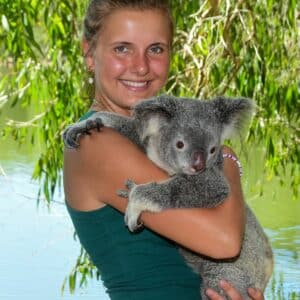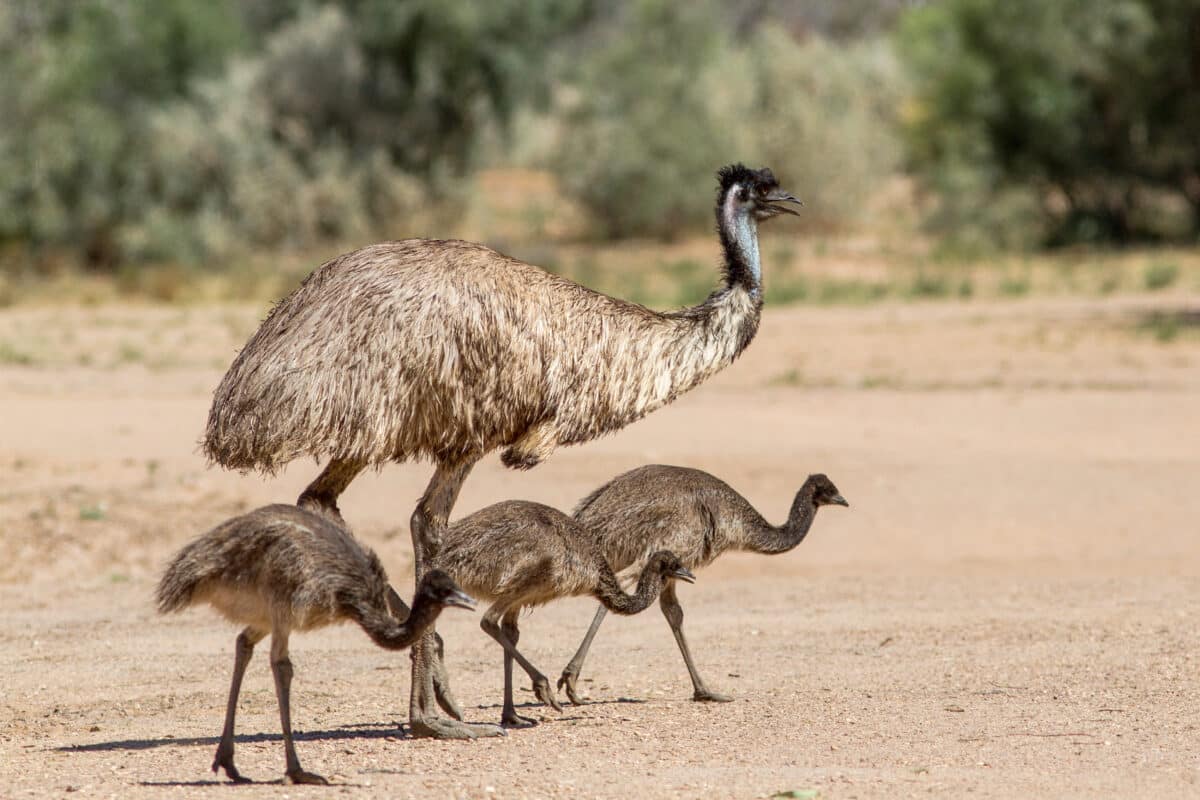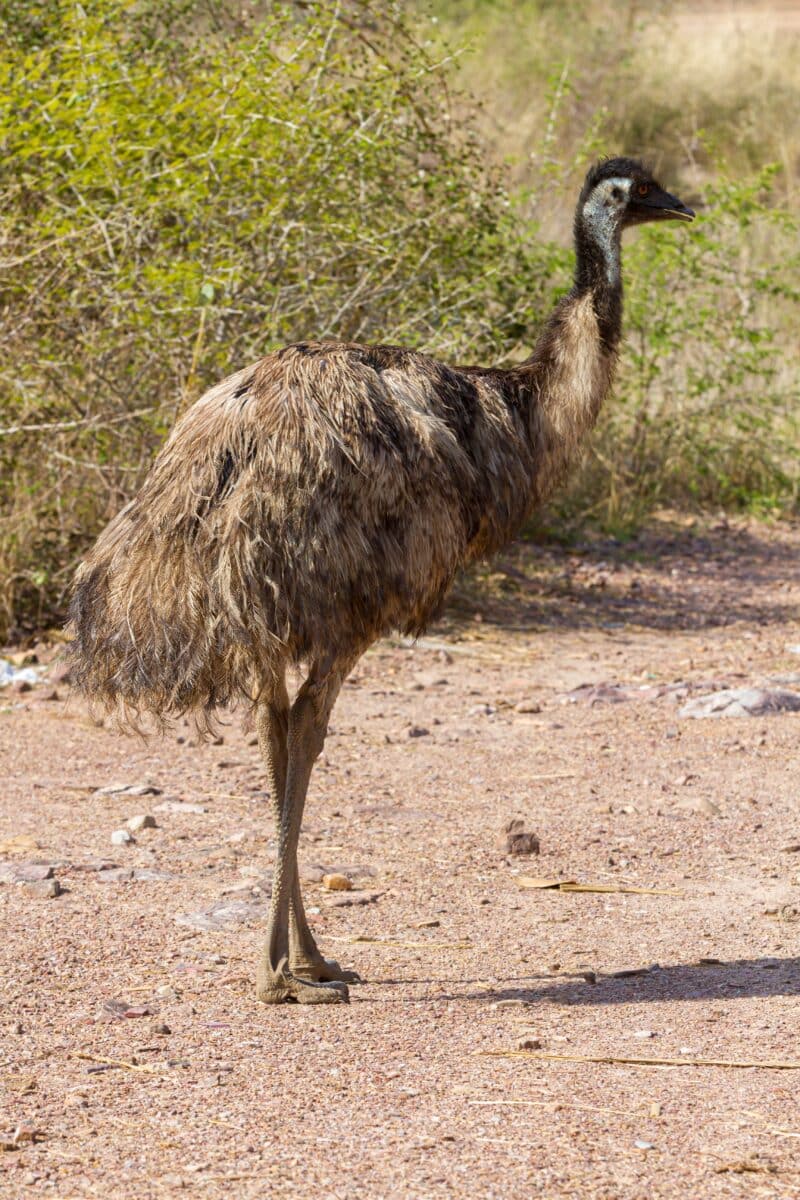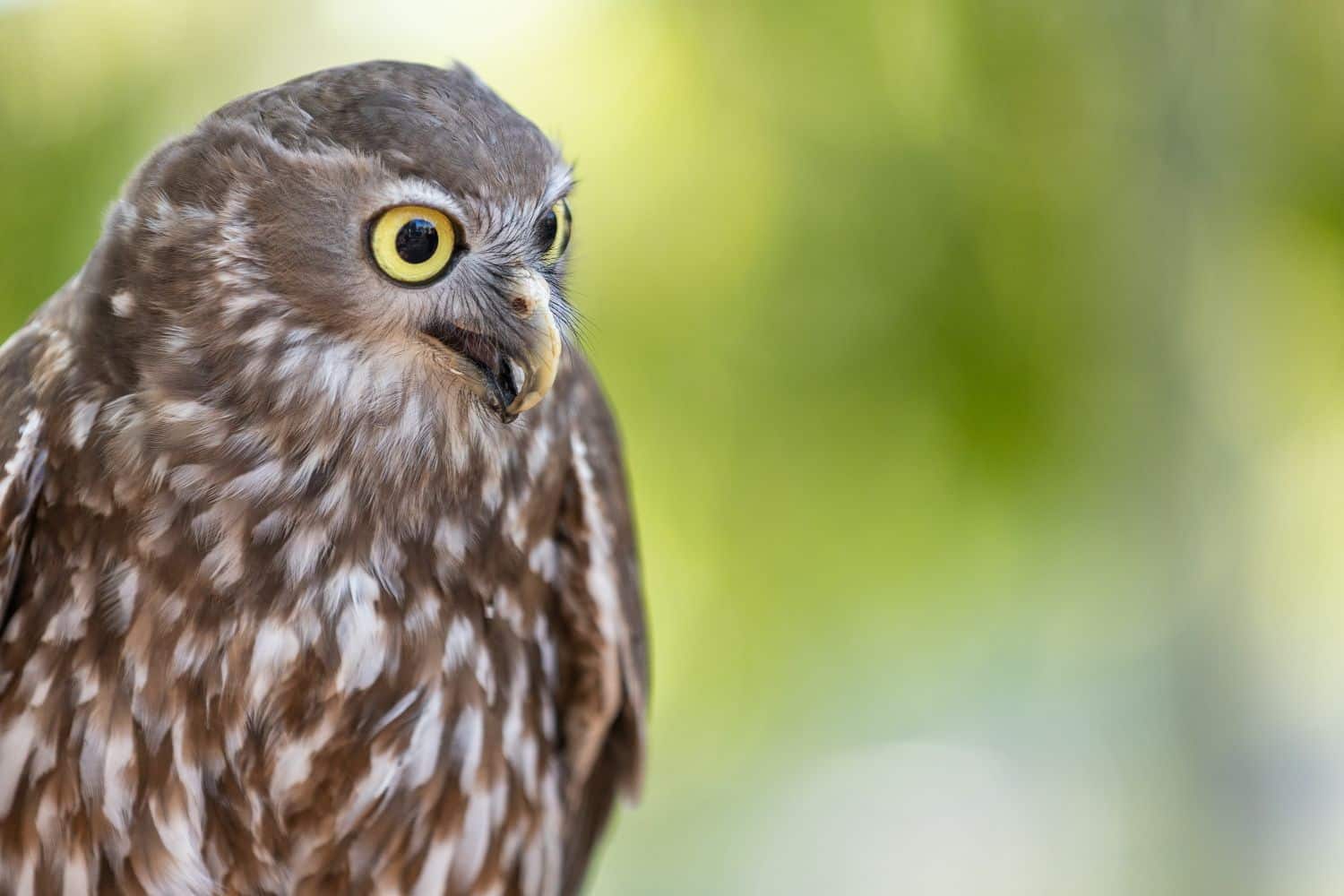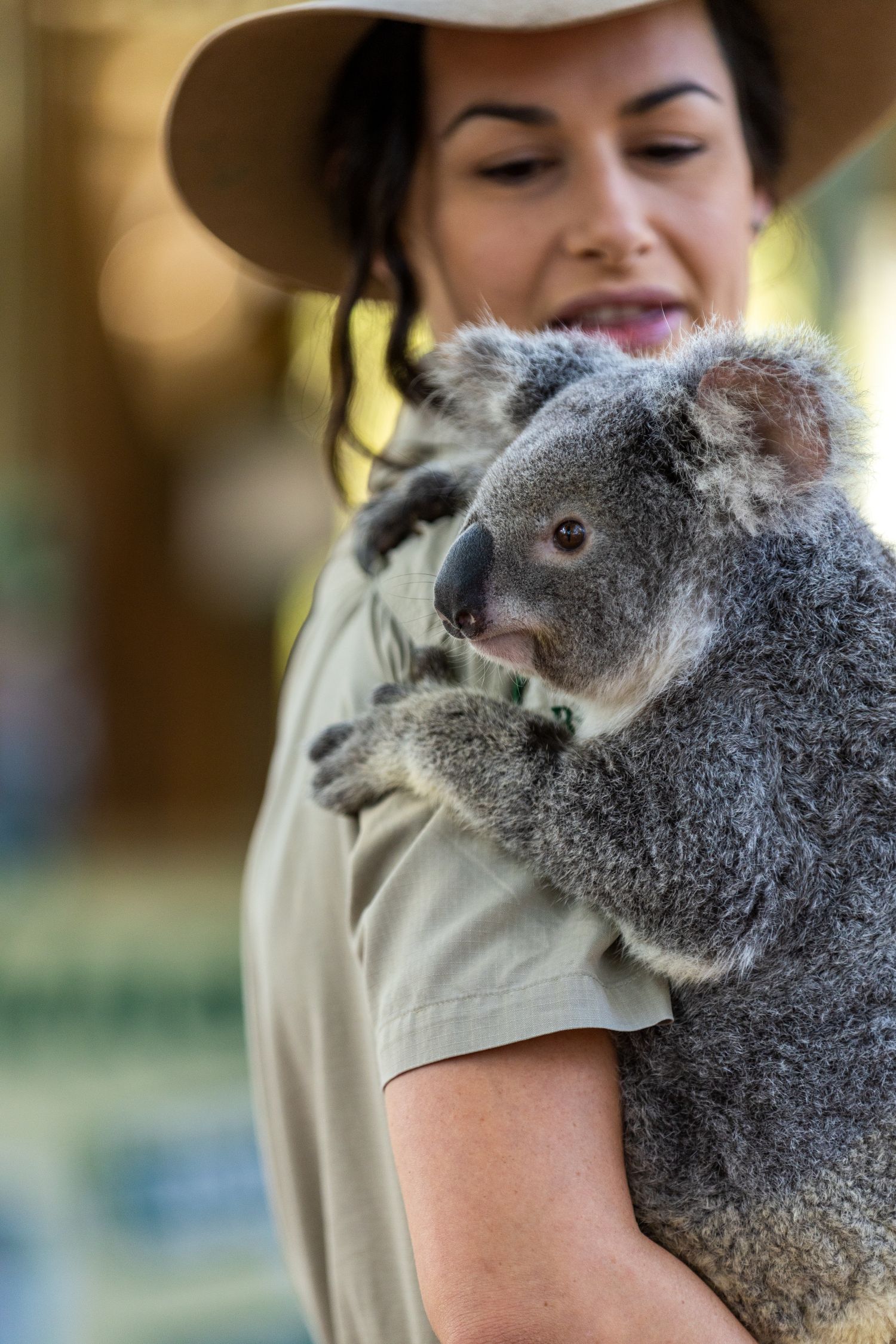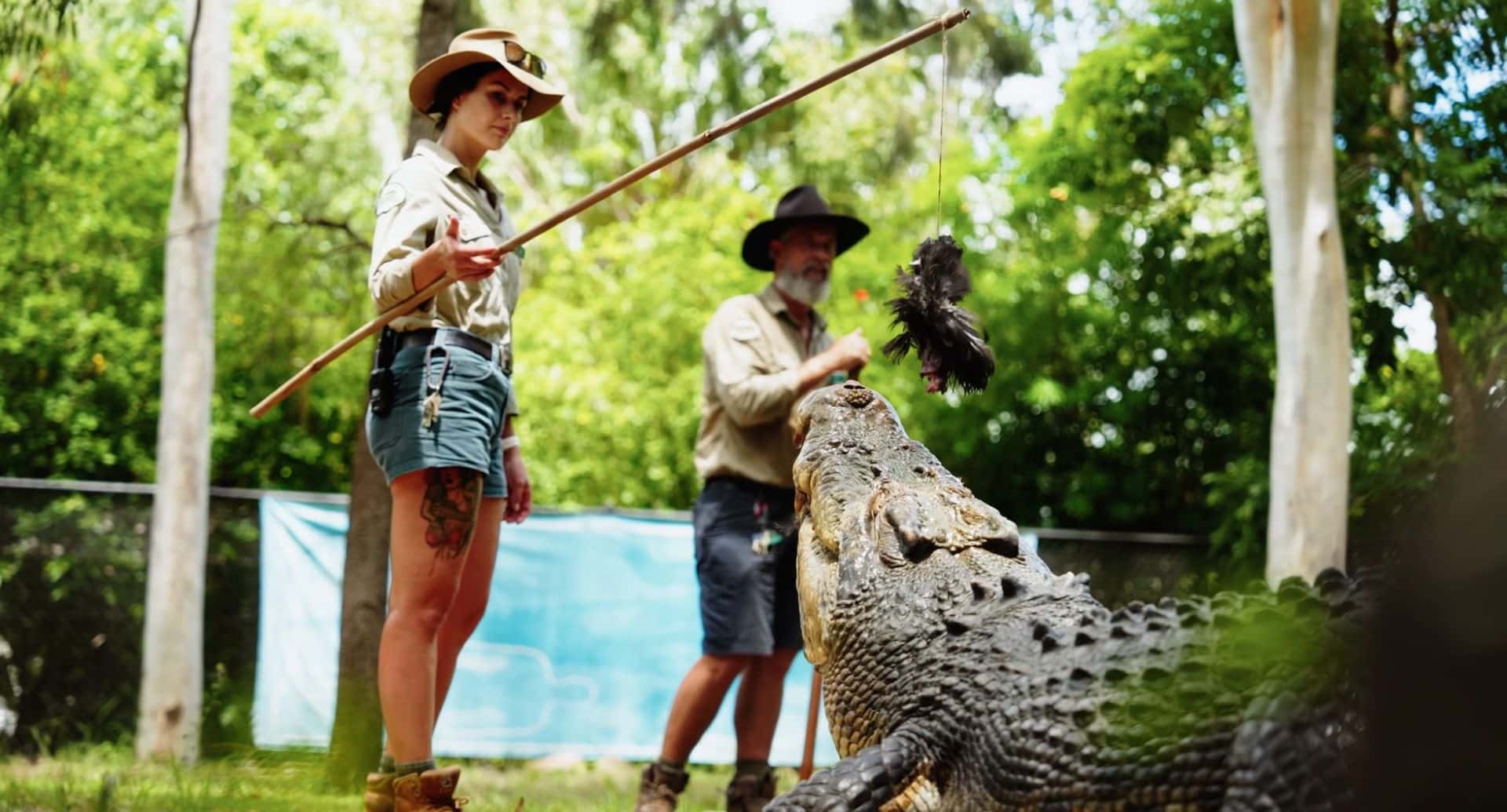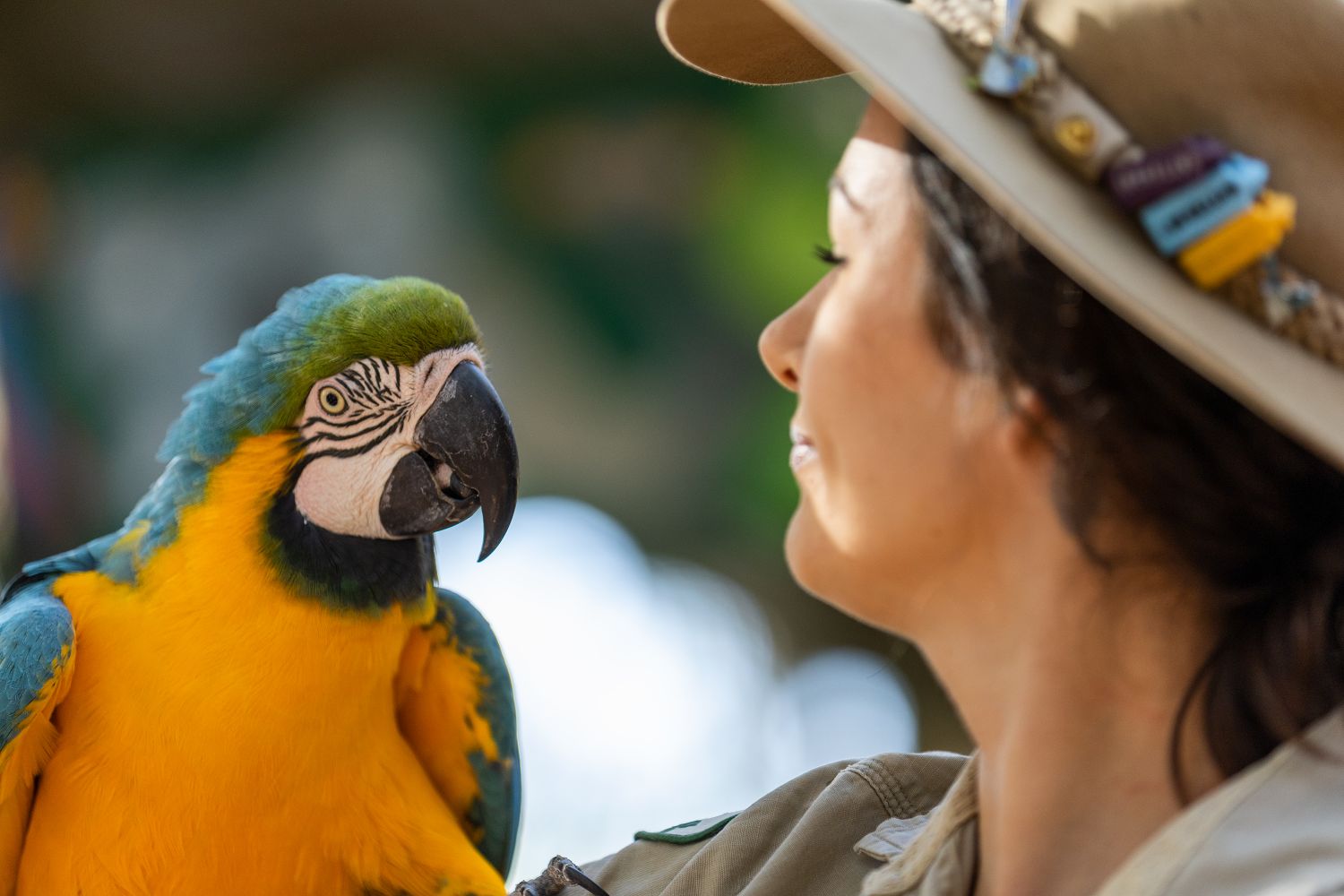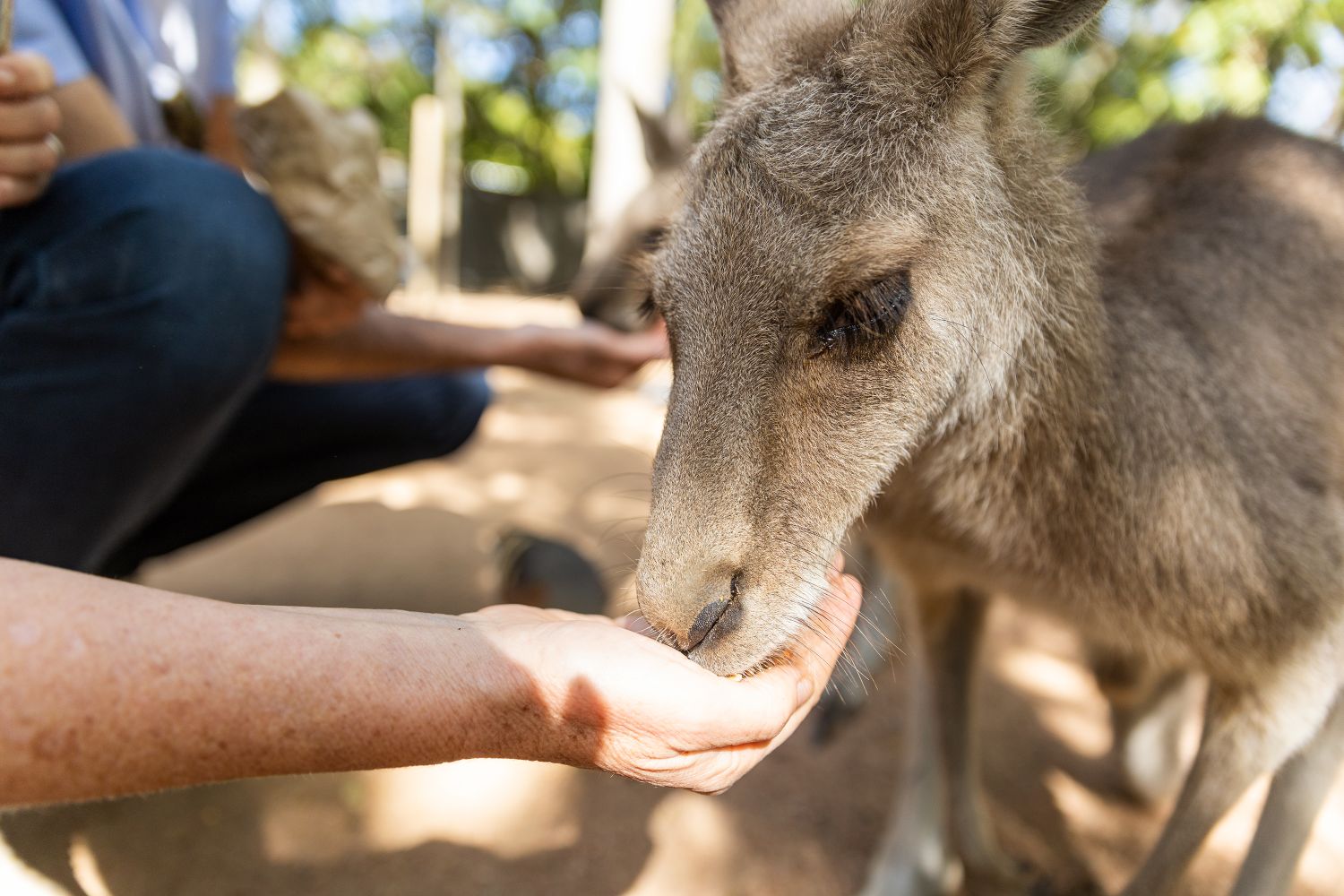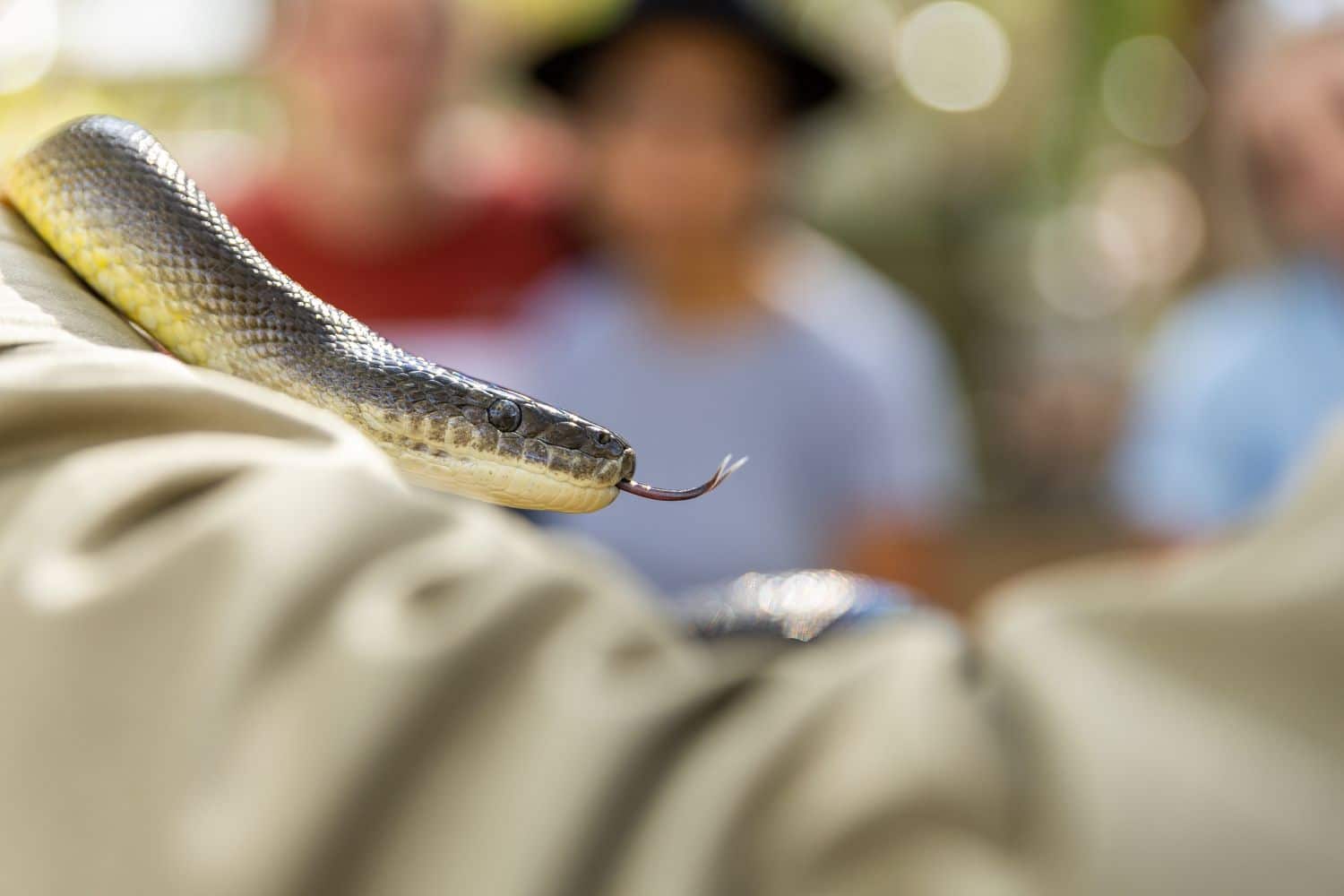Surely one of the most intriguing is the emu.
Here is a bird that towers over you and can outrun you, yet can’t get off the ground. Loping across the countryside with a body looking more like an overgrown sheepdog, perched on top of massive reptilian legs, an emu is certainly an amazing sight.
Visitors to Billabong Sanctuary can enjoy close encounters with these gentle giants. As you approach their enclosures, they will greet you with a deep murmuring ‘boooom’ sound.
WHAT’S IN A NAME?
The word emu comes from an Arabic word meaning ‘large bird’. At first, Portuguese settlers coined it to refer to cassowaries in Indonesia, and later it was adopted by the earliest European settlers in Australia as their name for our emu.
The name Dromaius derives from the Greek word ‘dromeas’ meaning ‘racer’. The species name novaehollandiae is Latin referring to New Guinea. Therefore, the scientific name roughly means ‘a fast runner from New Guinea’.
HOW ARE THEY DIFFERENT FROM OTHER BIRDS?
Emus belong to a small group of birds called ratites. These are the flightless birds, including cassowaries, ostriches and rheas.
The second largest bird in the world, the emu is massive, growing to 2m tall (6 ft) and weighing up to 55kg (120 lb)!
Emus lack a keel on the sternum (breastbone) which in other birds is the anchor for flight muscles. They have only tiny, vestigial wings, about 20cm long (8 in). No wonder they can’t fly!
Most birds have outer feathers with a single shaft, interconnected with tiny hooks that knit them together into a smooth, aerodynamic covering all over their body.
Emu feathers have two shafts, a main shaft and a secondary shaft. They lack the tiny hooks to bind them together, so they hang loosely, giving the body a shaggy appearance. Running your hand along an emu’s feathers is kind of like feeling the softly worn bristles of an old paintbrush.
Emus have long legs and powerful feet with only three toes, all facing forwards. (Most songbirds have three forward-facing and one backward-facing toe, while parrots have two facing forwards and two facing backwards.) This arrangement allows emus to run very fast. Emus love to run and speeds up to 48kph (almost 30 mph) have been recorded!
Funky Fact: Emus are the only birds that have calf muscles!
They can also walk long distances with ease, moving at a steady speed to find sources of food.
Emus love the water and are surprisingly good swimmers. When bathing, they don’t splash themselves using their wings as other birds do. They will flop down in a waterhole and roll from side to side until the feathers are thoroughly soaked. Then they stand up and shake themselves like a wet dog. A wet emu smells rather like a wet dog as well and is a wretched sight.
The second largest bird in the world, the Emu is massive, growing to 2m tall (6 ft) and weighing up to 55kg (120 lb)!
WHERE DO THEY LIVE?
Emus occur naturally in all Australian states except Tasmania (where a small population has recently been introduced).
They live in a wide variety of habitats, from the open plains of the interior to tropical woodlands, but prefer sclerophyll forest and savannah woodlands. Within these areas they are highly nomadic, wandering great distances as the availability of food and water varies with the changing seasons. The only areas you would not expect to find emus would be in tropical rainforest, in very arid desert country, and in heavily populated areas such as the eastern coastal strip.
WHAT DO THEY EAT?
Emus are omnivorous, but eat mainly vegetation. This varies with the season, and includes a wide variety of leaves, grasses, seeds and native flowers. When available, they also like water plants, such as duckweed and filamentous algae.
Emus need very nutritious food to maintain their huge body weight, so they seek out the most nourishing parts of the plant, such as young shoots, which they will eat roots and all. They avoid plants with little food value, such as dried grass and dead flowers.
Emus can cause a lot of damage in wheat fields. Farmers in Western Australia killed thousands of them in the past. Now emus are fully protected. An emu-proof fence stretching for 1000 km (600 miles) has been built to guide them away from grain crops in the southwest of the state.
Emus eat insects when abundant and readily caught, such as during grasshopper plagues. They will also eat large numbers of other invertebrates such as caterpillars and land snails, which they swallow whole.
The strong, wedge-shaped beak is serrated along the bottom edge. Emus forage by ripping off a chunk of vegetation, then flinging their head back and swallowing it whole. They also swallow large pebbles to help their gizzard grind up their food.
Emus seem to have easily adapted food preferences and will sample just about anything as they wander about.
REPRODUCTION
Emus usually pair up during summer and autumn, ahead of the winter breeding season. At this time the body feathers of the female become darker, and thick black feathers cover her head and neck, indicating her willingness to find a mate. During this time, she makes dull rattling sounds in her throat.
The male builds the nest, which is simply a rudimentary scrape in the ground, lined with trampled grass or leaves. In May or June, the female lays anywhere from five to 25 dark green eggs, with an average clutch size of around 10 eggs. Each egg can weigh up to 680 grams (1 1/2 pounds), the equivalent of about a dozen chicken eggs!
After she has finished laying, the female wanders off and has nothing more to do with her offspring. She may join a group of non-breeding birds, or she may find another partner and mate again.
The male now takes over the care of the eggs. He incubates them for about 60 days, during which time he rarely leaves the nest, and scarcely eats. His rate of metabolism drops, and he may lose up to 8kg (17 1/2 pounds) in body weight.
RAISING THE YOUNG
A newly hatched emu is small enough to fit in your cupped hand, and weighs up to 500 gm (just over a pound). The body is covered with downy black and white feathers, striped along the back, and arranged in a squiggly pattern on the top of the head. This coloration helps break up the outline of the body when seen from above, so the chick is less easily spotted by predators.
Emu chicks follow the male about, eating tender, young green shoots. As they forage, they whistle gently to each other. The whistling becomes louder and more high-pitched if they feel threatened or lose sight of their father.
When defending itself, the emu will rise up on tippy toes, stretch out its neck, puff up its feathers, and dance about, giving a coarse hiss and kicking out with its powerful feet.
The male will care for his chicks for up to 18 months. They will not reach breeding age till they are over two years old.
Wild emus live for 5 to 10 years. Those in captivity have a longer life expectancy.
STATUS IN THE WILD
According to the Australian Museum, there may be 625,000 to 725,000 wild emus in Australia. They are not considered to be at risk. In fact, the population has probably increased since European settlement, because of the abundance of man-made watering holes for sheep and cattle.
In addition, there are now hundreds of emu farms in Australia and overseas. In the United States alone, there are about 1 million domestic emus.
They are raised for their meat, leather, feathers and oil. Farming is closely regulated by state government authorities.
Wild emus in Australia are protected by law.


